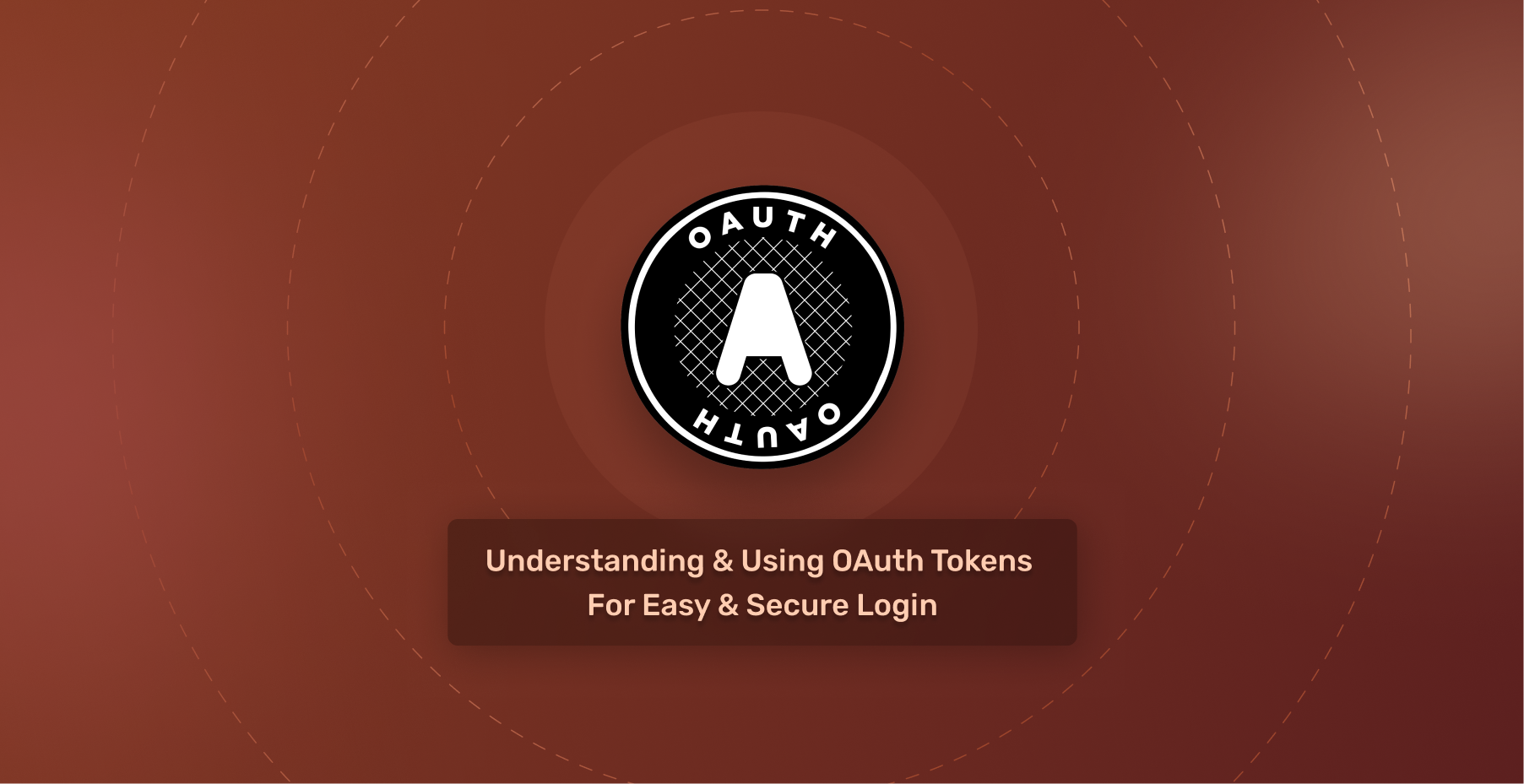OAuth tokens play a crucial role in modern web security, enabling secure and scalable authorization and authentication. When combined with SuperTokens, the synergy can significantly enhance your application’s security, scalability, and user experience. This blog will delve into OAuth tokens, comparing OAuth and OAuth 2.0, exploring their benefits and challenges, and providing insights into their best implementation practices.
Table of Contents
- What Are OAuth Tokens?
- OAuth vs. OAuth 2.0 Tokens
- When To Use OAuth Tokens
- UX & Security: OAuth Token Benefits & Challenges
- How To Implement OAuth Tokens For Best Results
- Customizing OAuth Tokens To Flow Seamlessly With Your Users
- Conclusion
What Are OAuth Tokens?
OAuth tokens are a core component of the OAuth protocol, a widely-used framework for authorization that allows applications to access resources on behalf of users without sharing their credentials. There are two primary types of OAuth tokens:
-
Access Tokens: These tokens grant applications the right to access specific resources. They have a limited lifespan and scope, enhancing security by minimizing potential misuse.
-
Refresh Tokens: These tokens are used to obtain new access tokens without requiring the user to re-authenticate, improving user experience and reducing friction in the authentication process.
OAuth tokens enable secure interactions between applications and third-party services, ensuring users’ data remains protected while providing seamless access to required resources.
OAuth vs. OAuth 2.0 Tokens
OAuth and OAuth 2.0 are iterations of the same authorization framework, but with significant differences:
-
OAuth (1.0a): The original version focused primarily on a single-use token system and had a more complicated signing process. It required cryptographic techniques to verify the authenticity of requests.
-
OAuth 2.0: This version simplified the protocol by eliminating the need for cryptographic signing and introducing token-based authentication. OAuth 2.0 supports various grant types, including authorization code, implicit, resource owner password credentials, and client credentials, offering greater flexibility and usability.
OAuth 2.0’s enhancements make it more suitable for modern applications, allowing for a more straightforward and versatile approach to authorization.
For more detailed insights on how OAuth flows are evolving in the post-third-party cookie era, check out our comprehensive FedCM blog post.
When To Use OAuth Tokens
OAuth tokens are ideal for scenarios where secure, delegated access to resources is required without exposing user credentials. Common use cases include:
-
Third-Party Integrations: Applications requiring access to user data from external services, such as social media platforms or cloud storage providers, can utilize OAuth tokens for secure access.
-
APIs: OAuth tokens are essential for securing API endpoints, ensuring that only authorized applications can access specific data or perform actions.
-
Mobile and Web Applications: OAuth tokens enable seamless user experiences by allowing single sign-on (SSO) and delegated authorization across multiple services.
UX & Security: OAuth Token Benefits & Challenges
Benefits:
-
Enhanced Security: By minimizing the exposure of user credentials and using short-lived access tokens, OAuth tokens reduce the risk of unauthorized access.
-
Improved User Experience: OAuth tokens enable SSO and streamlined authentication processes, reducing the need for repeated logins and improving usability.
-
Scalability: OAuth tokens facilitate secure, scalable access management for applications interacting with multiple third-party services.
Challenges:
-
Token Management: Ensuring the secure storage, transmission, and lifecycle management of tokens can be complex.
-
Implementation Complexity: Integrating OAuth can be challenging, particularly for developers unfamiliar with the protocol’s intricacies.
-
Security Risks: Mismanagement of tokens or vulnerabilities in the implementation can expose applications to security threats such as token theft or misuse.
For more insights on the differences between authentication and authorization, read our dedicated blog post.
How To Implement OAuth Tokens For Best Results
Implementing OAuth tokens effectively involves several best practices:
-
Use HTTPS: Always use HTTPS to encrypt the transmission of tokens, preventing interception by malicious actors.
-
Short-Lived Tokens: Utilize short-lived access tokens and refresh tokens to enhance security and minimize the risk of token misuse.
-
Scope Management: Define and enforce precise scopes to limit the access granted by tokens to only the necessary resources.
-
Token Storage: Store tokens securely, using mechanisms such as secure cookie storage on the client side and secure databases on the server side.
For developers looking to implement OAuth using the authorization code flow with PKCE, our step-by-step guide offers invaluable assistance.
Customizing OAuth Tokens To Flow Seamlessly With Your Users
Customizing OAuth tokens to align with your user experience requires attention to detail:
-
User Consent: Ensure that the user consent flow is clear and user-friendly, providing transparent information about the permissions requested.
-
Token Revocation: Implement mechanisms for users to revoke tokens, giving them control over their data and enhancing trust.
-
Error Handling: Design comprehensive error handling and messaging to guide users through potential issues during the authentication process.
-
SuperTokens Integration: Utilize SuperTokens to manage sessions and authentication securely, incorporating OAuth tokens seamlessly. SuperTokens can handle the storage and lifecycle management of OAuth tokens, ensuring robust security and an enhanced user experience.
By leveraging the strengths of both OAuth tokens and SuperTokens, you can build secure, scalable, and user-friendly applications that provide seamless access to resources while maintaining robust security standards.
For a comparison between SAML and OAuth, check out our in-depth article.
Additionally, implementing passwordless login can further enhance your security strategy. Learn how to do it effectively in our comprehensive guide.
To further enhance security, consider integrating multi-factor authentication. Discover its benefits in our detailed blog post.
Conclusion
Incorporating OAuth tokens into your application provides a robust framework for secure and efficient authorization and authentication. By understanding the differences between OAuth and OAuth 2.0 tokens, knowing when to use them, and following best practices for implementation, you can leverage their benefits while mitigating potential challenges. Customizing the OAuth flow to fit seamlessly with your user experience and integrating SuperTokens for session management further enhances security, scalability, and usability.
By combining the strengths of OAuth tokens and SuperTokens, you can create a secure and scalable authentication solution that enhances user experience and trust. For further insights and detailed guides on various authentication and authorization strategies, explore our blog posts on authentication vs. authorization, authorization code flow with PKCE, passwordless login, and multi-factor authentication.
Investing in a secure authentication framework is crucial for protecting user data and maintaining trust. With OAuth tokens and SuperTokens working together, your application can achieve a higher standard of security and user satisfaction.

